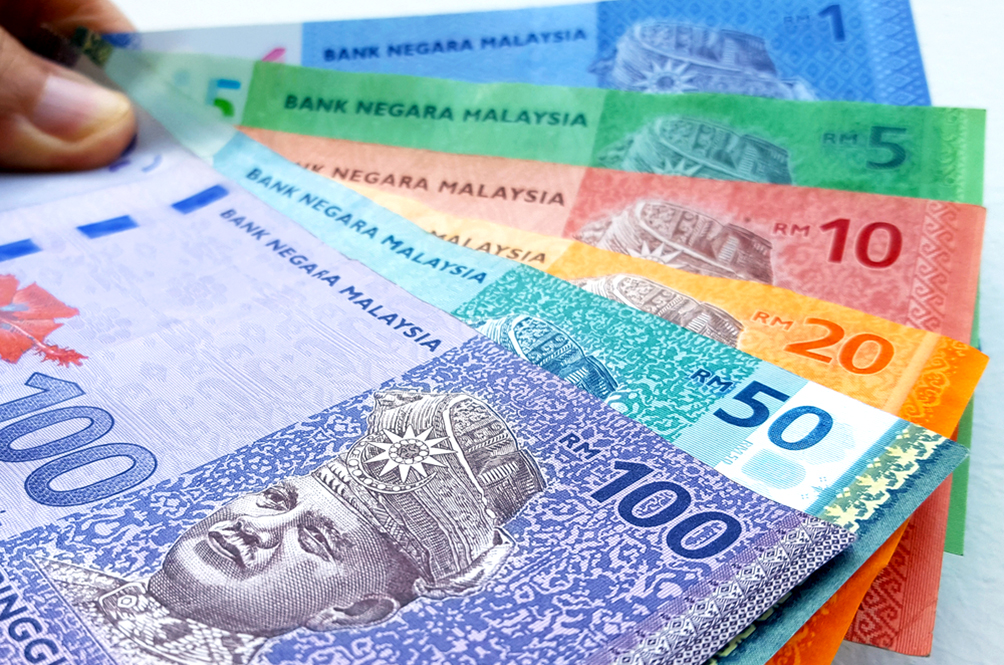By Nurunnasihah Ahmad Rashid
KUALA LUMPUR, May 14 (NNN-Bernama) — The Malaysian ringgit is expected to trend downward against the US dollar next week on lack of catalysts, according to an analyst.
He said there were multiple factors that seemed to negatively affect the economic recovery momentum.
Meanwhile, Bank Islam Malaysia Bhd chief economist Mohd Afzanizam Abdul Rashid said despite the rise in the overnight policy rate and better-than-expected Gross Domestic Product performance for the first quarter (Q1) of 2022, the US dollar-ringgit pair continued to linger on the weaker side.
“Clearly, market participants are engrossed with the US Federal Reserve’s (Fed) possible move to tighten their grip on monetary policy.
“Global equities have severely tanked while the 10-year US Treasury yields were below the three per cent level as investors were seeking refuge against volatility,” he told Bernama.
He said at present, the ringgit’s resistance level against the US dollar was located at RM4.447 while the support level was at RM4.340.
“Technical indicators indicate that the US dollar/ringgit is in the oversold region, suggesting that a possible correction could happen.
“However, concern over aggressive monetary tightening in the United States will dominate market sentiment next week,” he added.
On Friday, Bank Negara Malaysia (central bank) announced that the economy rebounded in Q1 2022 with a five per cent growth versus a contraction of 0.5 per cent in the same quarter last year, buoyed by improving domestic demand as economic activities continued to normalise with the easing of containment measures.
Its governor Nor Shamsiah Mohd Yunus said the domestic economy was expected to improve further this year, with growth projected to be between 5.3 per cent and 6.3 per cent in 2022, supported by the stronger domestic demand, continued expansion in external demand and further improvement in the labour market.
Pegging the ringgit would not be in the best interest of Malaysia as it would have substantial risks, she noted, adding that maintaining a peg would be a very costly policy as it took up a sizeable amount of reserves, especially in the last decade, and would ultimately weaken Malaysia’s external resilience.
“A peg would have detrimental effects on investors’ sentiment, affecting not only foreign direct investment into Malaysia but also leading to capital outflows from Malaysia,” she said.
Nor Shamsiah said the Volatility Index (VIX) had also gone up constantly which resulted in a stronger US dollar while currencies in other countries were seen to depreciate against the greenback.
“Movement in the ringgit is in line with other regional countries, and again I would like to stress that having a flexible exchange rate is most appropriate given the current circumstances,” she added.
On a weekly basis, the ringgit was lower against the greenback at 4.3980/3995 on Friday compared to 4.3650/3680 a week earlier.
The local note, however, was traded mostly higher against a basket of major currencies on a Friday-to-Friday basis.
The ringgit appreciated against the Singapore dollar to 3.1482/1497 from 3.1523/1549 a week earlier, improved versus the British pound to 5.3568/3586 from 5.3868/3905 last week, and rose against the euro to 4.5625/5640 from 4.6138/6170.
It, however, declined vis-a-vis the Japanese yen to 3.4127/4142 from 3.3453/3479 previously.
— NNN-BERNAMA






